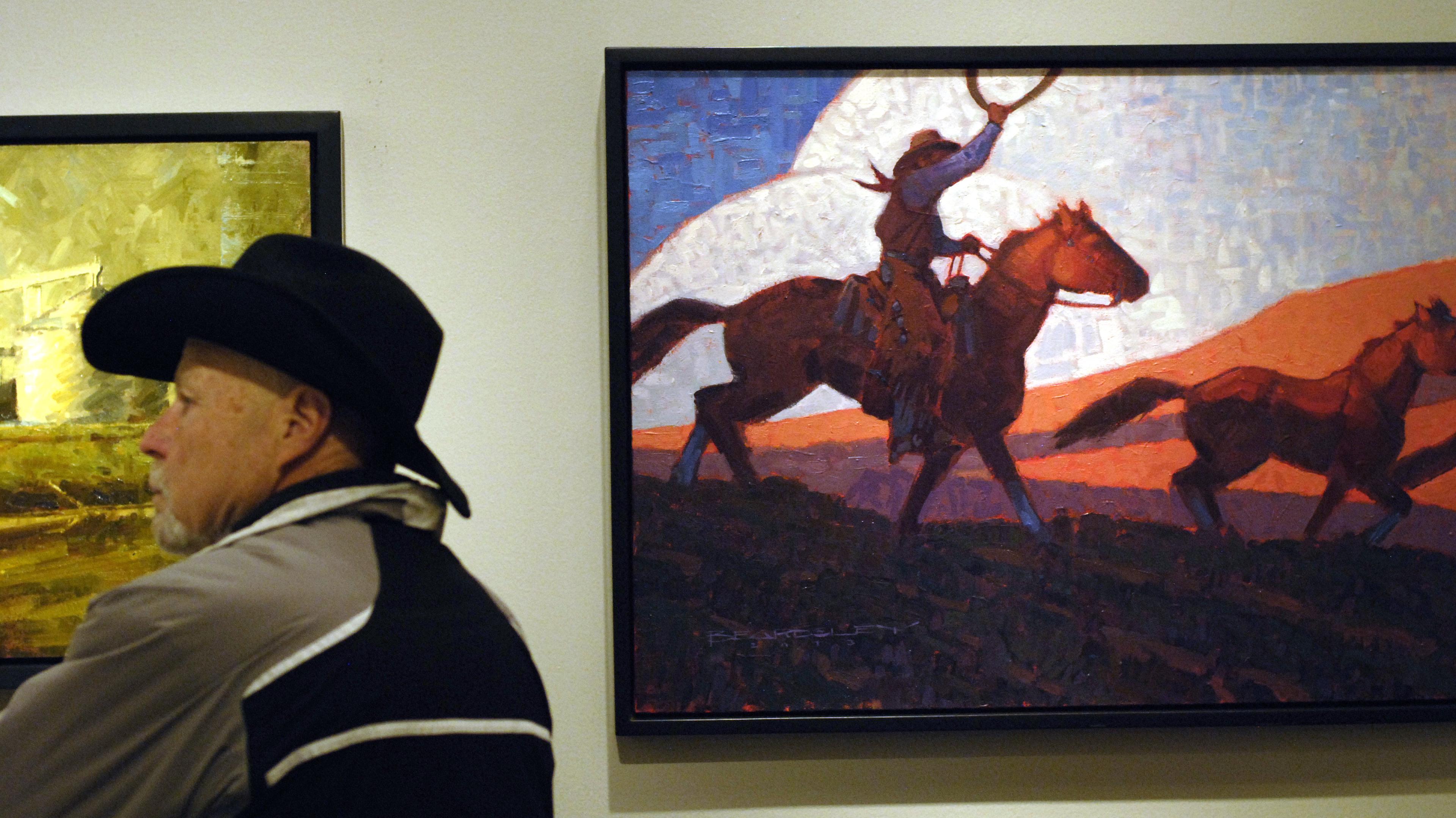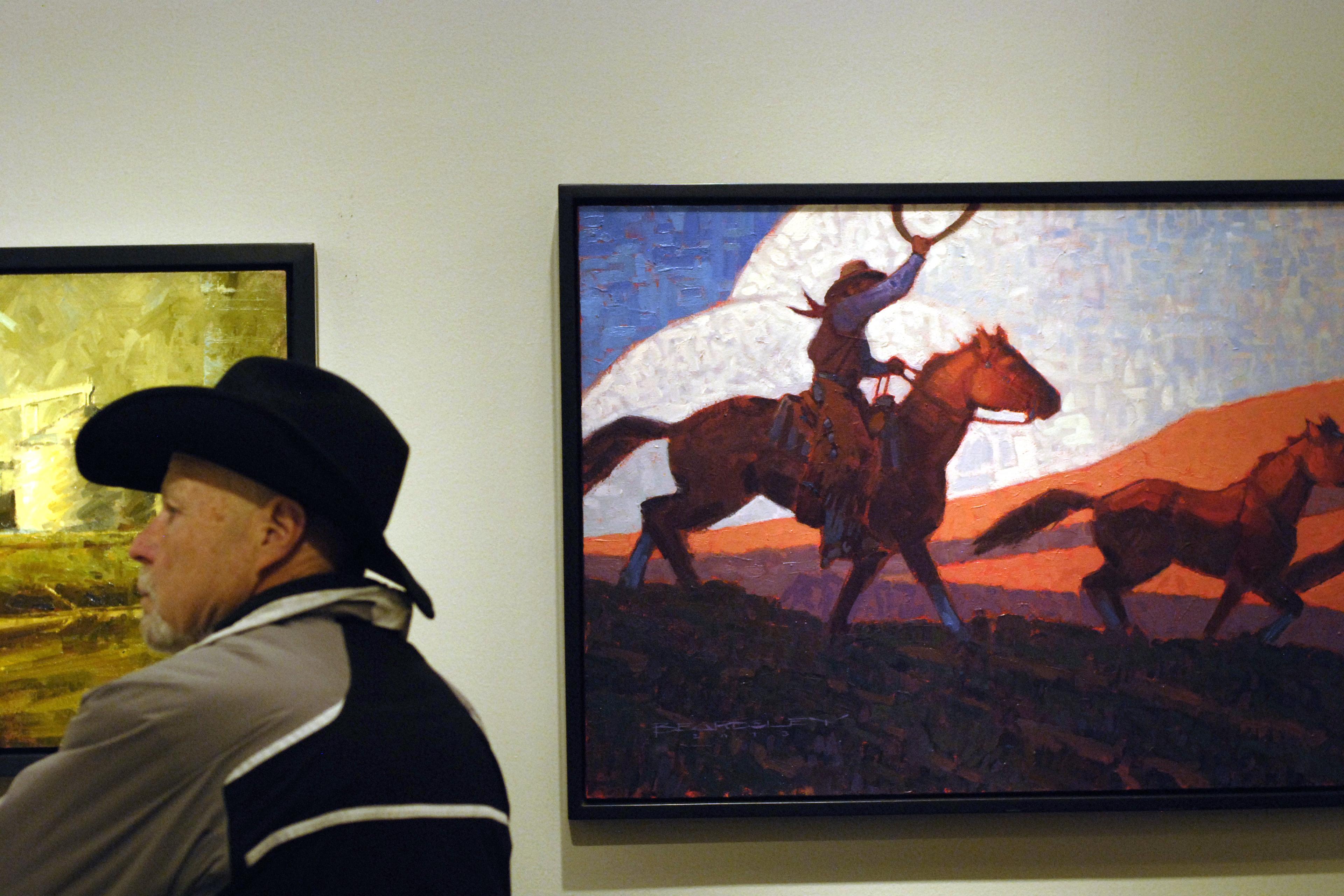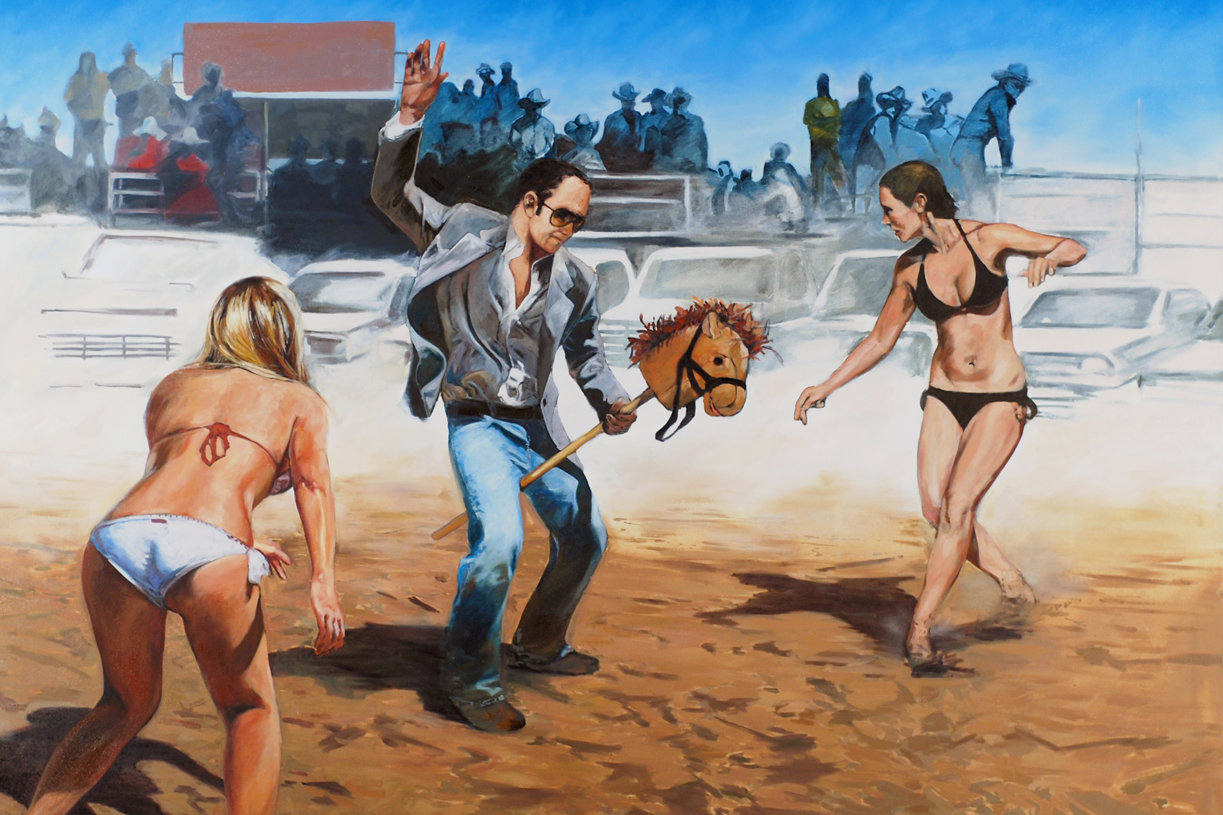

At the Stock Show, which runs through Sunday, January 26, the Coors Western Art Exhibit and Sale is increasing its emphasis on pieces that go beyond the standard mythology of the West, and other Colorado galleries and events are doing the same.
Bob Benefiel of Evergreen has been around rodeos most of his life, first riding at the age of 17. He says that there’s much more to the realities and routines of working cowboys than people glimpse at the Stock Show.
In fact, the general public is largely out of touch with the history and significance of the working cowboy, says Jeffrey Richardson, an expert at the Autry National Center of the American West in Los Angeles. Instead, the term "cowboy" typically conjures up the iconic image that's been codified by popular culture and art over time. Think: John Wayne.
And while the myth persists, some artists are shifting their focus in order to reveal the realities and address issues that are relevant in the American West today.
At the Stock Show exhibit, curator Rose Fredrick says she’s incorporating more pieces capable of inspiring deeper conversations these days than she did in the past. “What I’ve seen, and I think this is a trend in the art market nationally, is people really looking for more contemporary themes,” she says.
For example, Colorado artist Duke Beardsley has painted cowboys texting on horseback. Other artists are exploring issues such as water and land use as well as agriculture. A William Matthews painting portrays a cowboy battling freezing temperatures with enormous hay bales looming next to him.
Nikki Todd, owner of Visions West Gallery in downtown Denver, says she avoids outdated depictions in favor of fresh perspectives. “Our artists tend to be edgier, and we try to avoid sentimentality and artists who use more of a chronological retrospective view of the West,” she says.

More artists are exploring the different complexities and the dynamic experiences that today’s cowboys face. And that dialogue continues to expand through art, says Patty Limerick, faculty director at the University of Colorado at Boulder’s Center of the American West.
Now in its 25th year, the Colorado Cowboy Gathering in Golden does just that. The four-day event, which concluded on Sunday, January 19, features poetry and other performances that celebrate the heritage of the West while also addressing how it’s changed.
“It’s mostly a chance for people, both ranch people and urban people, to sit together, rub elbows and exchange thoughts,” says Liz Masterson, who sits on the board of directors.









